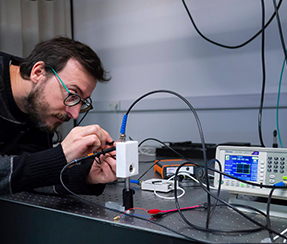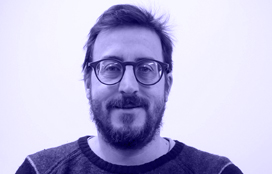Even though a lot is already known about the initial and final state of the compounds taking part in chemical reactions, that is not the case for the process itself. That is mainly because of two big limitations: the speed of chemical reaction (on the order of hundreds of femtoseconds,1 fs = 1E-15 s) and the magnitude of the structural changes that take place (on the order of sub-angstrom). Therefore, to design and experiment which can register the structural changes in the molecules as they transform during the chemical reaction, it is necessary to overcome these barries. Since the shutters cannot operate on the femtosecond scale, the use of ultrashort lasers (< 100 fs) with the stroboscopic technique enables to overcome the temporal barrier. The time-resolved UV/Vis spectroscopies use these techniques to study the evolution of the electronic structure of molecules along a reaction. In these experiments, a laser beam -the pump- is used to initiate a chemical reaction in the sample and a second beam -which impinges the sample at a variable time delay with respect to the pump- is used to measure, e. g., changes in the sample absorbance. However, these spectroscopies are not sensitive to changes in the molecular structure since, to achieve this, it is necessary to use radiation with a wavelength on the order of the interatomic distances, i. e. X-rays or electrons. And this radiation needs to be obtained as sub-picosecond pulses.
In our group, we use femtosecond electron diffraction (FED) combined with time-resolved UV/Vis/NIR spectroscopies and several steady-state techniques to study to ultrafast dynamics of different chemical reactions and physical processes taking place in systems with potential applications in the solar energy conversion and storage.

Group leader
Gastón Corthey
Undergraduate student
Gastón Grosman

Gastón Corthey
Group Leader
CONICET Adjunct Researcher.
He studied chemistry at the National University of La Plata where he also obtained a PhD working at The Research Institute of Theoretical and Applied Physical Chemistry.
Mail: gcorthey@unsam.edu.ar